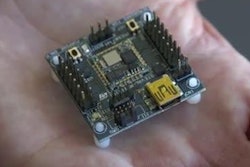MRI-directed ultrasound is often used to further characterize MRI-detected lesions and to plan ultrasound-guided core needle biopsy. But its accuracy isn't perfect: A prior study found that 13% of ultrasound correlates to MRI lesions were considered inaccurate on follow-up MRI after ultrasound-guided core needle biopsy.
A team led by Dr. Brian Jin of Mount Sinai Health System sought to test the accuracy of biopsied ultrasound correlates to MRI-detected findings, as determined on follow-up MRI. The study consisted of a retrospective review of 7,332 contrast-enhanced MRI exams performed between January 2009 and December 2012.
Jin and colleagues identified MRI-detected lesions that were subjected to MRI-directed ultrasound, ultrasound-guided core needle biopsy, and follow-up MRI after benign biopsy. An ultrasound-guided biopsy was considered accurate if the biopsy clip was within 1 cm of the MRI lesion on follow-up MRI, they wrote.
MRI-directed ultrasound was performed on 522 lesions; ultrasound correlates were identified in 298 cases. Subsequent ultrasound-guided core needle biopsy was performed on 219 of these 298 cases, and follow-up MRI was performed on 90 of these 219 biopsies. Of the 90 biopsied lesions, seven were excluded from the study because biopsy markers were not used.
In the remaining 83 lesions, the biopsy marker was accurate 87% of the time on follow-up MRI. This led Jin's group to conclude that follow-up MRI for suspicious MRI-detected lesions with concordant benign results on ultrasound-guided core needle biopsy should be performed, as 13% of presumed sonographic correlates were inaccurate.



















